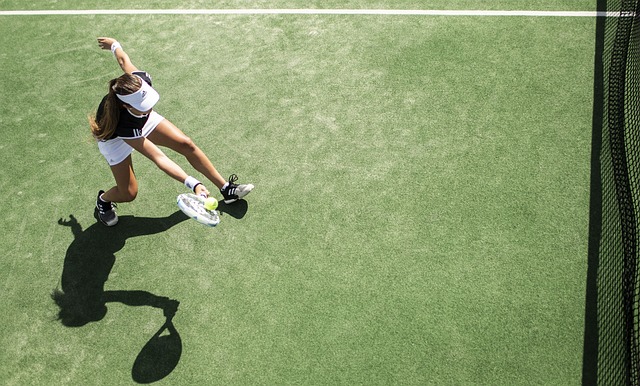Any fan of tennis will know that different types of tennis court surfaces provide a different style of play. Some surfaces, for example harder courts, allow a faster game, because the ball will travel around the court quicker, while other surfaces, such as clay courts offer a slower speed of play and a higher bounce.
When having a tennis court installed, it’s important to consider the different types of tennis court surfaces that there are and which would be most suitable for your needs.
In addition to the type of play which you can expect from the tennis court surfaces, you should also take into account factors such as the level of maintenance required to keep it in good condition and whether the surface will be able to withstand year-round play and adverse weather conditions. If your court is to be played on a lot (because it’s to be installed at a sports club, or educational establishment, for example), you may also want to explore the tennis court surfaces which are the most hardwearing.
Types of tennis courts
To help you get a good idea of the surface which would be best for you, in this blog, we discuss the different types of tennis court surfaces and look into the pros and cons of having them installed. Firstly, you can choose from the following:
- Rubber
- Synthetic grass
- Clay
- Hard courts
- Grass courts
Grass courts are iconic, thanks to internationally famous tennis championships such as Wimbledon, but, before you go thinking about having your own mini All England Lawn Tennis Club installed, it’s vital that you take into account the hugely high levels of maintenance which are involved in keeping a grass court looking at its best. In addition, if you live in a country where it rains a lot (like the UK), then you need to be certain that your court can be covered when the weather turns bad, or you will run the risk of the court being ruined. Similarly, while clay courts can be an exciting surface to play on, they again require lots of maintenance and weather can affect play.
Why we love rubber and synthetic tennis surfaces
Before we explore our favourite types of tennis surfaces, there’s also the option to choose a hard surface tennis court. These can be played on all year round and require a lot less maintenance than grass or clay courts, but it’s important to consider the harsh effect that playing on a hard court can have on your joints and how slippery they can become when it’s wet. In contrast, a rubber court, for example, is a much softer surface to play on, offering a much more comfortable experience of play.
The pros of synthetic grass and rubber courts are as follows:
- Easy to maintain
- Can be played on all year round
- Consistent surface with a low bounce
- Cheaper to install and repair
- Synthetic grass courts offer the aesthetic appeal of grass courts, but without the maintenance
- Kinder to joints, meaning more regular play
Our experts have been installing synthetic grass and rubber tennis court surfaces all over the UK for many years. Without doubt, these seem to be the most popular tennis court surfaces, thanks to the bonus factors of low maintenance, combined with the possibility of year-round play and a more comfortable game.
Get Your 100% FREE Quote Now
If you would like to find out more about the different types of tennis court surfaces that are available and discuss the solution which might be best for you, then get in touch with a member of our team today and get a free quote from one of our installation specialists.

